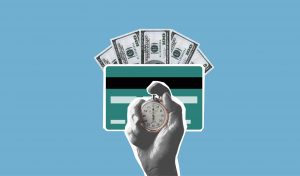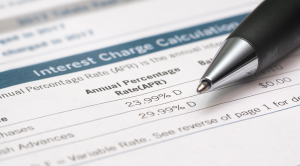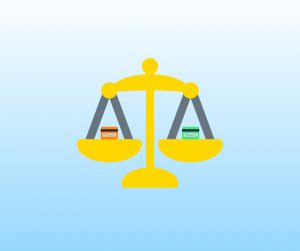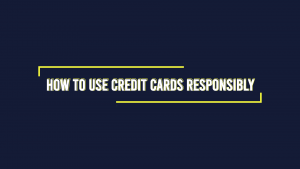How Credit Card Interest Works

Principles of Power in Personal Finance
06/17/2022
Everything You Need to Know About Credit Utilization Ratios
06/24/2022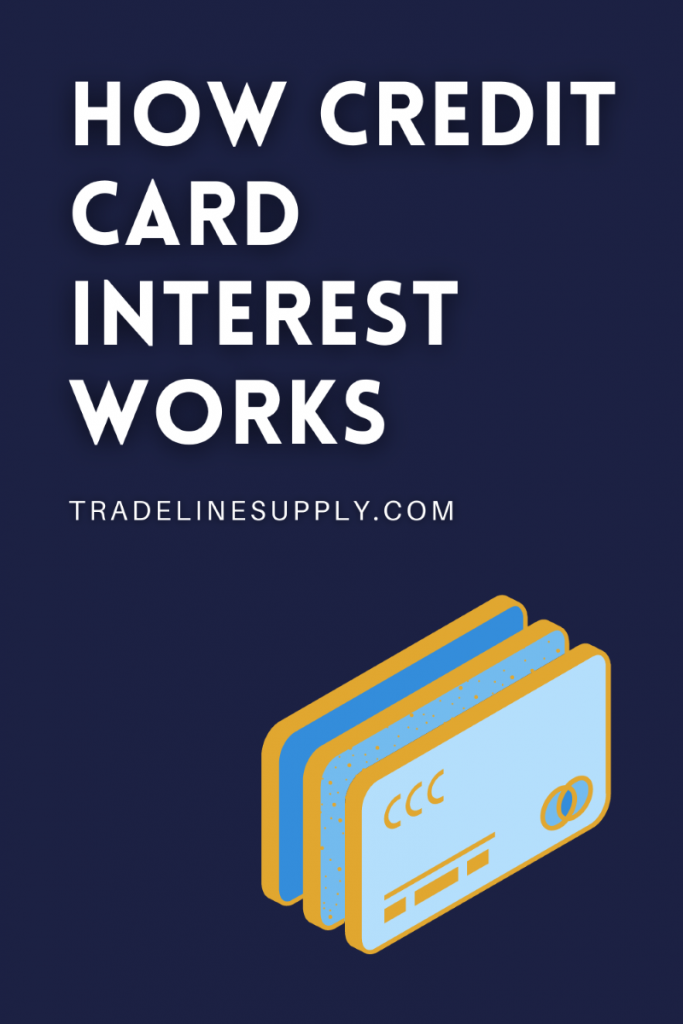 Credit card debt can get expensive quickly. The notoriously high interest rates that come attached to your credit card can let even a relatively small balance get out of hand quickly. So, understanding how credit card interest works can help you avoid hefty interest charges that could derail your financial plans.
Credit card debt can get expensive quickly. The notoriously high interest rates that come attached to your credit card can let even a relatively small balance get out of hand quickly. So, understanding how credit card interest works can help you avoid hefty interest charges that could derail your financial plans.
Ready to learn how credit card interest works? Let’s take a closer look.
Interest Rate vs. APR: What’s the Difference?
When considering a credit card, you’ll come across the terms interest rate and APR. Although these terms are sometimes used interchangeably, they represent different concepts when related to debt in general.
Here’s a closer look at both:
Interest Rate
An interest rate is a percentage that you pay to borrow money from a lender. You’ll find the interest rate attached to a loan will be considered either fixed or variable.
A fixed interest rate means it stays the same over the course of your loan. A variable interest rate fluctuates over the course of your loan. In either case, the interest rate only considers the amount you’ll pay in interest. It will not consider the other costs associated with borrowing the funds.
APR
The annual percentage rate or APR takes your interest rate into account. But it also considers the other costs associated with borrowing the funds. Those other costs might include any fees or expenses tied to your credit card balance.
Essentially, any expense that the borrower cannot avoid will be factored into the APR.
The Big Difference: Scope
The major difference between APRs and interest rates is what’s included in the percentage.
In terms of cost, an interest rate is just a starting point for most loans. The interest rate attached to a loan is just the beginning of your costs. But the APR attached to a loan considers all of your unavoidable costs.
When it comes to revolving credit accounts, like credit cards, your APR and interest rate will be the exact same number. However, if you look at the fine print of your credit card, you’ll find that the number is described as an APR.
How Does Credit Card Interest Work?
Technically, paying interest to use a credit card is optional. As a credit card user, you’ll usually find a grace period of at least 21 days before interest starts accruing on new purchases. If you pay off your balance by the due date, you can avoid any interest charges.
In a perfect world, we’d all be able to pay our entire credit card balance at the end of each and every statement cycle. But that’s not always realistic. At some point or another, a cash flow crunch might force you to carry a balance on your credit card.
When credit card interest is charged, it will compound daily for the balance carried on your card. Each day, the interest you owe is added to the balance. The next day, your interest charges will be calculated on that higher balance.
With your balance snowballing daily, it’s easy to see how credit card balances can get out of hand quickly.
How Is Credit Card Interest Calculated?
Credit card interest is a little bit tricky to calculate. But we will walk through an example to illuminate how credit card interest works in real life.
If you want to run the numbers of your own situation without pulling out your pen and paper, then consider using a free credit card interest calculator.
Determine the Daily APR on Your Card
The math starts by calculating your daily APR. You can do this by dividing your APR by 365.
For example, let’s say that you have a credit card with an interest rate of 16%.
0.16 / 365 = 0.00044.
So, your daily APR is 0.00044.
Find Your Daily Balance
The credit card issuer will calculate your interest payments on a daily basis. With that, you’ll need to determine your average daily balance to see how much interest you will accumulate.
Find the average daily balance by combing through your old statements. Look through your statement to find the day’s balance. If your credit card statement doesn’t provide this information easily, then add up your individual charges for each date within a billing period.
Next, divide up the total by the number of days in the billing cycle.
Let’s look at a simplistic example. In this example, you have total daily charges of $100, $200, $400, and $500. With a billing cycle of 5 days, your average daily balance is $400.
But in most cases, you’ll have a billing cycle of around 30 days.
Multiply Your Daily Periodic Rate By Your Average Daily Balance
After finding the numbers in steps one and two, you can multiply them together.
So, in our example, you would multiply the daily periodic rate of 0.00044 by the average daily balance of $400.
0.00044 x $400 = $0.176
Multiply This Number by the Days in Your Billing Cycle
With the number from step three, you can multiply it by the number of days in your billing cycle.
If your billing cycle is 30 days, you can multiply $0.176 by 30.
$0.176 x 30 = $5.28
So, in this case, you would be charged $5.28 in interest for this billing cycle.
How to Compare Credit Card Interest Rates
When deciding on a credit card, the APR attached to a card is a very important feature to consider. Although no one plans to get into credit card debt, signing up for an unreasonably high credit card APR seems like tempting fate.
The good news is that you can easily find information on credit card rates through a “Schumer Box.” A Schumer Box is a nod to New York Senator Charles Schumer, who has the credit for passing the legislation that requires all credit card issuers to display their terms in this easy-to-read format.
Within the standardized Schumer Box, you’ll find the APRs attached to a credit card at the top of the box. However, you’ll quickly find that there is usually more than one APR listed.
A few of the different APRs you might find include:
- Standard APR: This APR applies to new purchases.
- Introductory APR: Credit card issuers may offer a lower APR to entice you to apply for the card. But an intro APR will only last for a limited amount of time.
- Balance transfer APR: If you transfer a balance to your card from another card, the balance transfer APR would apply.
- Cash advance APR: If you pull out cash from your credit limit, you’ll find a separate APR. In most cases, the cash advance APR is much higher than the standard APR.
As you weigh your options, your reasons for opening the card will highlight which APR is most important. For example, if you want to transfer an existing balance from a high interest credit card, then you’ll look for an attractive balance transfer APR. But if you are just planning to use the card for purchases, then the standard APR will be the most important number.
What’s a Good Credit Card Interest Rate?

Remember, you can avoid paying credit card interest by paying your balance off in full every month. But if that’s not a possibility, then you’ll want to find the lowest possible interest rate.
As of 2022, the Federal Reserve found the average credit card interest rate to be 14.56%. Ideally, you’ll find a credit card with an interest rate below the national average. But even with a relatively good credit card interest rate, you’ll still find that your balance can grow very quickly.
The best way to find out what a good credit card interest rate is for your particular credit score is to compare rates across issuers. You’ll only find the best deal by taking the time to shop around. If you end up carrying a balance, this upfront effort could save you thousands of dollars.
Will Credit Card Interest Rates Be Impacted by the Rising Rate Environment?
Credit card interest rates, like interest rates for other loan types, are tied to the prime rate. In general, the prime rate is three points higher than the federal funds rate. So, if the federal funds rate is 1%, then the prime rate is around 4%.
Most credit cards have variable APRs, which are tied to the prime rate. If the prime rate rises, then credit card APRs will also rise. In a rising interest rate environment, credit card APRs will rise as well. Conversely, a falling interest rate environment would lead to lower credit card APRs.
As interest rates rise, credit card debt will get more expensive.
What Other Fees Are Attached to My Credit Card?
Unfortunately, credit card APRs don’t include all possible fees you might encounter. Instead, some credit card users will find extra fees attached to certain actions.
Here are a few of the most common credit card fees.
Annual Fee
Many premium credit cards come with an annual fee. Depending on your card, you might find an annual fee between $95 and $500. Or you might find a credit card without an annual fee at all.
Many credit cards waive the annual fee for the first year. So, keep that in mind when shopping around for the right card.
Late Fees
Although you can carry a balance on your credit card, you’ll still need to make the minimum payment by the due date. If you make a late payment, expect to encounter a fee between $30 and $40 per offense.
Balance Transfer Fee
A balance transfer can help you save on interest charges. But many credit card issuers charge a fee to make the transfer. The cost could be around 3% to 5% of the balance. If looking for a balance transfer to get debt under control, then seek out a card with a 0% transfer fee.
Foreign Transaction Fee
If making a purchase outside of the U.S., some cards charge a fee. Usually, this transaction fee is around 3% of the purchase.
Cash Advance Fee
You can borrow cash against your credit limit. But it’s an expensive option. Expect to pay between 3% to 5% of the cash advance in fees.
How to Get a Good Credit Card Interest Rate
A good credit card interest rate can help you save thousands on credit card balances. The solution to tapping into better interest rates is to build a good credit score.
With a better credit score, you can enjoy lower credit card interest rates. Beyond that, you can access premium rewards cards that can help you get the most bang for every dollar spent.
Here are the top strategies to build your credit.
On-time Payments
Payment history accounts for 35% of your FICO score. As the most heavily weighted factor, it’s important to prioritize making your payments on time across all credit accounts.
When you build a solid history of on-time payments, your credit score will improve. But on the flip side, an unreliable track record will hurt your score.
If you struggle to keep up with your payment due dates, consider automated payments. If a more serious cash flow issue prevents you from making an on-time payment, then reach out to your lender. Some may be willing to adjust your payment due date or provide a temporary reprieve.
Keep Utilization Low
After your payment history, credit utilization is the next most important factor in your FICO score. Since credit utilization accounts for 30% of your FICO score, making sure it’s at an optimal level is key.
Most experts recommend keeping your credit utilization ratio below 30%. So, if you have a credit limit of $1,000, then keeping your credit usage at $300 or below would be ideal.
Spend Within Your Means
When you open a credit card, a high limit might entice you into spending more than your budget can necessarily afford. Although the lender is willing to offer you the funds, that doesn’t mean you should tap into credit that you cannot comfortably repay.
Before signing up for a credit card, track your spending and set up a budget. A careful eye on your spending can help you avoid carrying a credit card balance. 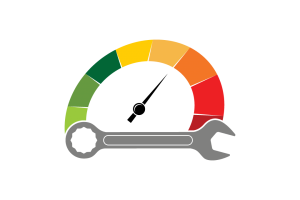
Credit Repair
Credit repair is the process of removing any mistakes found on your credit report. If you have incorrect information on your credit report, then it’s likely to pull your score down with negative information. By removing the negative information, you can potentially increase your credit score.
A legitimate credit repair agency can help you dispute mistakes on your credit report. You can also work on repairing your credit yourself for free.
Credit Tradelines
In contrast to credit repair, which removes negative information from your credit report, credit tradelines add credit information.
In its simplest form, a tradeline is any credit account on your credit report. You can purchase authorized user tradelines, which add you as an authorized user to a credit card account in good standing.
The Bottom Line
Credit card APRs compound daily. When this fact is combined with the notoriously high interest rates offered by most credit cards, it’s easy to see how a credit card balance can grow quickly.
Before you sign up for a credit card, make sure you are comfortable with the interest charges that you may face. And if possible, pay off your entire credit card balance by the statement due date to avoid paying any credit card interest at all.

